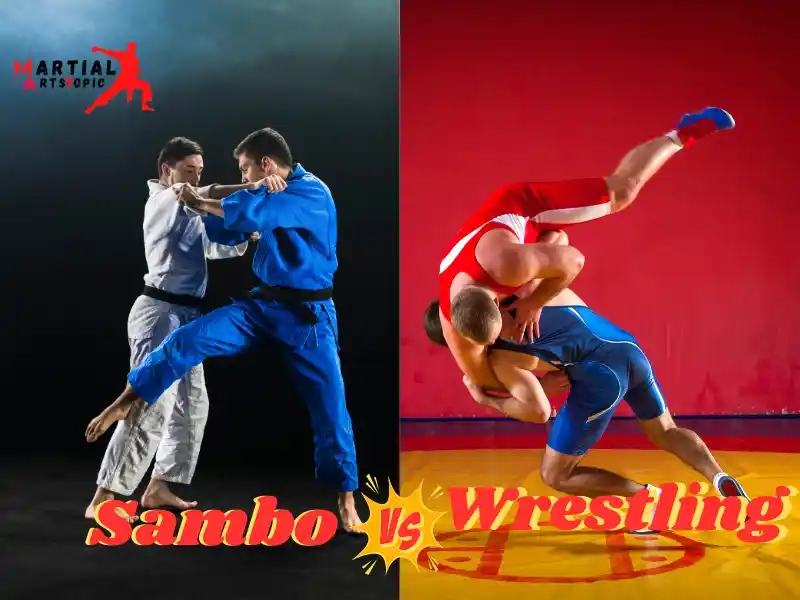
Sambo vs Wrestling: Which Martial Art Reigns Supreme?
When comparing Sambo vs Wrestling, it’s important to consider the unique strengths and techniques of each martial art. Sambo, originating from Russia, focuses on a combination of grappling, throwing, and striking techniques, making it a versatile and effective martial art for self-defense and combat sports. On the other hand, Wrestling, with its deep roots in various cultures, emphasizes takedowns, pins, and controlling an opponent on the ground. Both disciplines have their own merits, with Sambo’s emphasis on striking offering a wider range of techniques, while Wrestling’s focus on takedowns and ground control provides a solid foundation for close-quarters combat. Ultimately, the choice between Sambo and Wrestling depends on individual preferences, training goals, and the specific application of the martial art.
Sambo vs Wrestling: Unraveling the Similarities and Differences
Sambo and wrestling are two grappling sports that have captured the interest of martial arts enthusiasts around the world. While both disciplines share some similarities, they also have distinct differences that set them apart. The world of Sambo vs wrestling, unraveling their similarities and differences to provide a comprehensive understanding of these fascinating martial arts.Sambo, a Russian martial art and combat sport, emphasizes throws, takedowns, and ground control. It incorporates a blend of techniques from judo and traditional folk wrestling styles, making it a dynamic and versatile discipline. On the other hand, wrestling, with its roots in ancient Greece, focuses on takedowns, pins, and controlling an opponent on the mat. Both Sambo and wrestling require strength, agility, and tactical thinking, making them physically demanding and mentally stimulating sports.
Similarities Between Sambo and Wrestling
- Grappling Techniques: Both Sambo and wrestling emphasize grappling techniques, such as takedowns, throws, and controlling an opponent on the ground. Athletes in both sports must master these techniques to gain a competitive edge.
- Physical Conditioning: Athletes in both disciplines undergo rigorous physical conditioning to build strength, endurance, and agility. Flexibility and explosiveness are crucial for executing techniques effectively.
- Competitive Spirit: Sambo and wrestling competitions are intense and demand mental toughness. Athletes in both sports must possess a strong competitive spirit and the ability to perform under pressure.
Differences Between Sambo and Wrestling
- Rules and Scoring: Sambo competitions involve scoring points for throws, takedowns, and ground control, while also allowing submissions. In wrestling, points are awarded for takedowns, controlling an opponent, and pinning the opponent’s shoulders to the mat.
- Attire: Sambo practitioners wear a jacket and shorts, while wrestlers wear singlets. The attire in each sport is designed to facilitate the execution of techniques and ensure the safety of the athletes.
- Origins and Cultural Significance: Sambo has its origins in Russia and holds cultural significance in Eastern Europe, while wrestling has a rich history in various cultures around the world, including the Olympics.
Origin and History
Origin and History of Sambo and Wrestling in martial arts, the rich history and origins of different disciplines provide valuable insights into their development and evolution. Sambo and wrestling are two such martial arts with fascinating origins and historical development.
Origins of Sambo
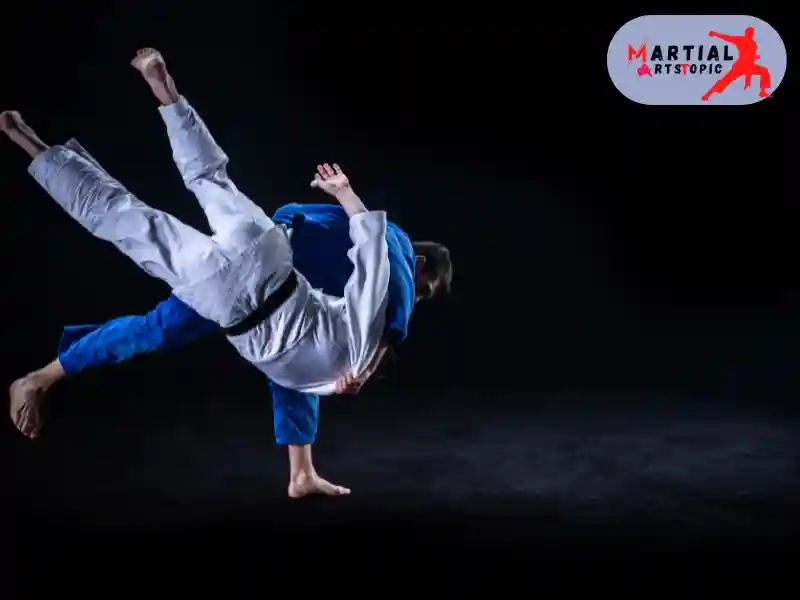
Sambo, which stands for “self-defense without weapons” in Russian, has its roots in the early 20th century in the Soviet Union. It was developed as a comprehensive martial art that combined techniques from various traditional martial arts, as well as modern combat sports. The founders of Sambo aimed to create a versatile system that could be effectively used for both self-defense and combat sports competition.
A variety of martial arts influenced the development of Sambo, including judo, jiu-jitsu, and traditional wrestling styles. This amalgamation of techniques resulted in a unique martial art that emphasized throws, joint locks, and ground fighting. Over time, Sambo developed into both a combat sport and self-defense, gaining popularity in Russia and beyond.
Origins of Wrestling
Wrestling, on the other hand, boasts a history that dates back thousands of years, with evidence of wrestling-like activities found in ancient cave paintings and historical records. Various forms of wrestling have been practiced across different cultures and civilizations, each with its own set of rules and techniques.
In the modern context, wrestling has been a part of the Olympic Games since their inception, showcasing the enduring popularity and significance of the sport. The origins of wrestling can be traced back to ancient civilizations such as Sumer, Egypt, and Greece, where it held cultural and competitive significance.
Historical Development of Each Martial Art
Cultural, social, and geopolitical factors has shaped the historical development of Sambo and wrestling. Sambo underwent significant development in the Soviet Union, where it was promoted as a martial art that embodied the spirit of the nation. It gained recognition as an effective combat sport and self-defense system, leading to the establishment of international Sambo competitions and organizations.
Wrestling, on the other hand, evolved differently across various regions, with distinct styles emerging in different parts of the world. Freestyle and Greco-Roman wrestling became prominent international styles, each with its own rules and techniques. Wrestling also became an integral part of educational institutions and military training programs, further solidifying its place in global martial arts culture.
Sambo vs Wrestling: A Comparative Analysis
When comparing Sambo and wrestling, it’s important to recognize the unique characteristics and techniques that define each discipline. Sambo emphasizes both standing and ground-based combat, incorporating a wide range of throws, submissions, and defensive tactics. Wrestling, on the other hand, focuses on takedowns, controlling positions, and pinning techniques, with variations in rules and scoring criteria across different styles.
Both Sambo and wrestling have made significant contributions to the world of martial arts and combat sports, influencing the development of mixed martial arts (MMA) and other hybrid fighting disciplines. While they have distinct origins and technical aspects, both disciplines share a common goal of honing physical abilities, mental fortitude, and strategic thinking.
Techniques and Tactics
When it comes to martial arts, the techniques and tactics employed in different disciplines play a crucial role in determining the effectiveness of a practitioner. The world of Sambo and wrestling, exploring the unique techniques and tactics associated with each discipline and highlighting the key differences between the two.
Sambo Techniques and Tactics
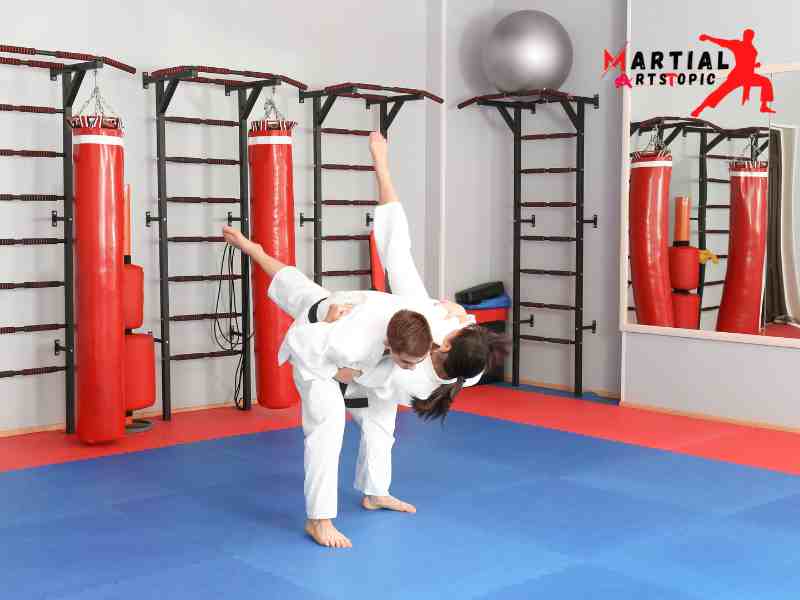
Sambo, a dynamic martial art with roots in Russia, is known for its diverse range of techniques that encompass both standing and groundwork. One of the defining features of Sambo is its emphasis on versatility and adaptability, allowing practitioners to seamlessly transition between striking, grappling, and submission techniques.
In Sambo, practitioners are trained to leverage their opponent’s momentum and balance, often using throws and sweeps to gain a dominant position. The utilization of joint locks and chokeholds further exemplifies the comprehensive nature of Sambo, giving practitioners an array of tools to control and subdue their opponents.
When it comes to tactics, Sambo practitioners are encouraged to maintain a balanced approach that capitalizes on both offensive and defensive maneuvers. By combining explosive takedowns with strategic groundwork, Sambo practitioners aim to outmaneuver their opponents and secure advantageous positions to execute their techniques effectively.
Throws and Takedowns
Sambo, a dynamic and versatile martial art, places a strong emphasis on throws and takedowns. Utilizing a combination of leverage, balance, and timing, Sambo practitioners execute an array of throws to off-balance and control their opponents. From the explosive hip throw (o-goshi) to the swift foot sweep (deashi harai), Sambo offers a diverse repertoire of techniques designed to take down adversaries with precision and efficiency.
Groundwork and Submissions
Besides its emphasis on throws, Sambo excels in the realm of groundwork and submissions. Practitioners are trained to seamlessly transition from standing to ground positions, where they can apply a variety of joint locks, chokes, and pins to immobilize and submit opponents. With an emphasis on fluidity and adaptability, Sambo practitioners develop a comprehensive skill set for dominating opponents in close-quarters combat.
Wrestling Techniques and Tactics

Wrestling, a time-honored martial art with global appeal, focuses on the art of takedowns, control, and positioning. Wrestlers are renowned for their exceptional strength, agility, and technical prowess, traits that are reflected in the techniques and tactics employed within the discipline.
The hallmark of wrestling techniques lies in the proficiency of executing powerful takedowns, often through the implementation of various grips, setups, and footwork. Once on the ground, wrestlers excel in maintaining control and pressuring their opponents, utilizing positional dominance to wear down and outmaneuver their adversaries.
Tactically, wrestlers are known for their relentless pursuit of advantageous positions, often employing a strategic blend of offensive pressure and defensive resilience. By dictating the pace of the match and imposing their will on their opponents, wrestlers aim to capitalize on openings and transitions to secure victory.
Takedowns and Pins
Wrestling, renowned for its emphasis on takedowns and pins, offers a formidable array of techniques designed to secure control and dominance. From explosive double-leg takedowns to strategic single-leg attacks, wrestlers master the art of initiating and executing powerful takedowns to gain the upper hand in matches. Once on the mat, wrestlers utilize their expertise in pinning techniques to immobilize opponents and score valuable points.
Defense and Escapes
A crucial aspect of wrestling involves mastering defensive tactics and escapes. Wrestlers are trained to anticipate and counter their opponents’ takedown attempts, utilizing techniques such as sprawls, hip escapes, and effective hand fighting to thwart attacks. Additionally, wrestlers develop the agility and awareness needed to escape from disadvantageous positions, ensuring they can quickly regain control and momentum in matches.
Training and Conditioning
When it comes to training and conditioning for martial arts, it’s essential to understand the specific demands of each discipline. Sambo and wrestling both require dedicated strength, flexibility, and endurance training. Sambo emphasizes a combination of grappling, throws, and submission holds, making it essential to focus on functional strength and agility. Wrestling, on the other hand, places a strong emphasis on explosive power and takedown techniques. Conditioning for wrestling involves intense cardio workouts and strength training to execute powerful moves. Both disciplines demand rigorous training regimens to excel, and understanding the unique physical demands of each is crucial for effective preparation.
Training Tips for Sambo
- Focus on Technique: Sambo is all about technique and leverage. Take the time to perfect your throws, takedowns, and ground fighting techniques. Practice with a partner to ensure your movements are precise and effective.
- Strength and Conditioning: Building strength and endurance is crucial for Sambo. Incorporate strength training exercises such as squats, deadlifts, and kettlebell swings into your workout routine. Additionally, high-intensity interval training (HIIT) can help improve your cardiovascular endurance, which is essential for the fast-paced nature of Sambo competitions.
- Flexibility: Flexibility is key in Sambo, as it allows for better range of motion and helps prevent injuries. Incorporate yoga or dedicated stretching sessions into your training regimen to enhance your flexibility.
- Mental Preparation: Sambo is not just a physical sport – it also requires mental fortitude. Practice visualization techniques to prepare yourself for competition scenarios and improve your mental focus during training and matches.
- Rest and Recovery: Don’t underestimate the importance of rest and recovery. Adequate rest allows your body to repair and grow stronger. Listen to your body and incorporate rest days into your training schedule.
Conditioning Exercises for Sambo
- Kettlebell Swings: This exercise targets the posterior chain, which is essential for explosive movements in Sambo.
- Medicine Ball Throws: Improve your upper body and core strength with medicine ball throws against a wall or to a partner.
- Sled Pushes: Mimic the pushing and pulling movements of Sambo with sled pushes to build lower body strength and power.
- Battle Ropes: Incorporate battle rope exercises to improve grip strength and endurance, essential for grappling in Sambo.
- Plyometric Jumps: Enhance your explosive power with plyometric exercises such as box jumps and depth jumps.
Training Tips for Wrestling
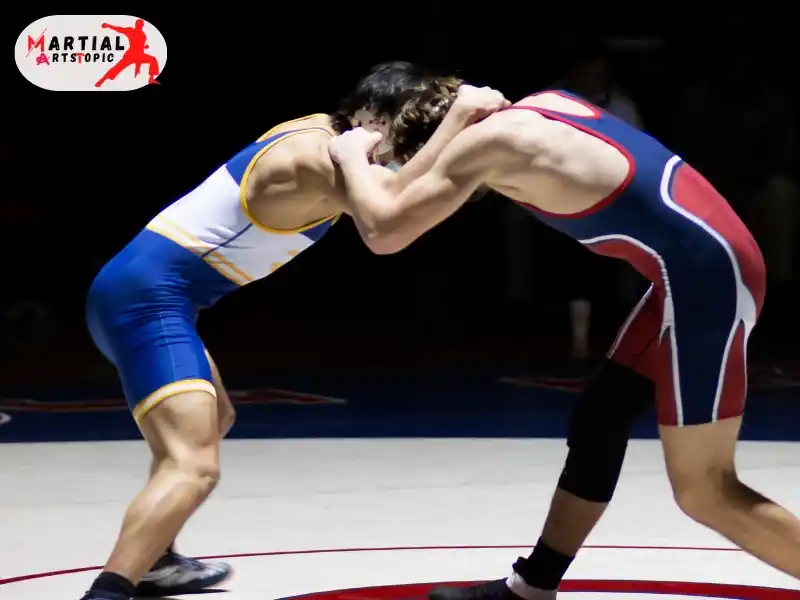
- Strength Training: Incorporate strength training exercises such as squats, deadlifts, and bench presses to build muscle and improve overall strength. These exercises help in developing the power needed to execute takedowns and maintain control during matches.
- Cardiovascular Endurance: Wrestling matches are intense and require exceptional cardiovascular endurance. Incorporate high-intensity interval training (HIIT), sprints, and endurance runs to boost your stamina and keep up with the fast-paced nature of wrestling.
- Flexibility and Mobility: Flexibility is crucial in wrestling as it allows for fluid movement and helps prevent injuries. Incorporate dynamic stretching and mobility exercises into your routine to improve flexibility and range of motion.
- Technique Drills: Dedicate time to perfecting your wrestling techniques through repetitive drills. Focus on takedowns, escapes, and reversals to sharpen your skills and build muscle memory.
- Mental Toughness: Wrestling is not just a physical battle, but a mental one as well. Train your mind to stay focused, resilient, and composed during matches. Visualization techniques and mental imagery can help build mental toughness and enhance performance under pressure.
- Balance and Coordination: Work on improving your balance and coordination through specific exercises such as single-leg squats, agility ladder drills, and balance board exercises. These will help you maintain stability and control while executing wrestling techniques.
- Recovery and Rest: Don’t overlook the importance of rest and recovery. Adequate sleep, proper nutrition, and active recovery techniques such as foam rolling and stretching are essential for optimal performance and injury prevention.
Competition and Rules
Welcome to our comprehensive guide on Sambo and wrestling competitions and rules! Whether you’re an aspiring athlete, a curious fan, or just someone interested in martial arts,
Sambo Competitions and Rules
Sambo, which stands for “self-defense without weapons” in Russian, is a dynamic martial art that originated in the Soviet Union. Sambo competitions showcase the versatility and effectiveness of this combat sport. There are different formats and regulations that govern Sambo competitions, each adding its own unique flavor to the sport.
Sambo Competition Formats
Sambo competitions can be categorized into several formats, including sport Sambo and combat Sambo. Sport Sambo emphasizes throws, ground fighting, and submissions, while combat Sambo incorporates striking techniques, making it a more well-rounded martial art. Understanding the nuances of each format is crucial for participants and spectators alike.
Sambo Competition Rules
In Sambo competitions, athletes adhere to a set of rules that govern their conduct and techniques. These rules ensure fair play and safety for all participants. Key aspects of Sambo competition rules include scoring criteria, prohibited techniques, and regulations for protective gear.
Wrestling Competitions and Rules
Wrestling is a time-honored sport that has captivated audiences for centuries. With various wrestling styles originating from different cultures around the world, each style brings its own set of competition rules and techniques to the mat.
Various Wrestling Styles
Wrestling encompasses a diverse range of styles, such as freestyle wrestling, Greco-Roman wrestling, and folkstyle wrestling. Each style has its own unique rules and techniques, making the world of wrestling a rich tapestry of athleticism and strategy.
Wrestling Competition Rules
The rules governing wrestling competitions vary depending on the specific style being contested. Understanding the rules related to scoring, permissible techniques, and out-of-bounds scenarios is essential for wrestlers and fans to fully appreciate the intricacies of the sport.
Benefits and Applications
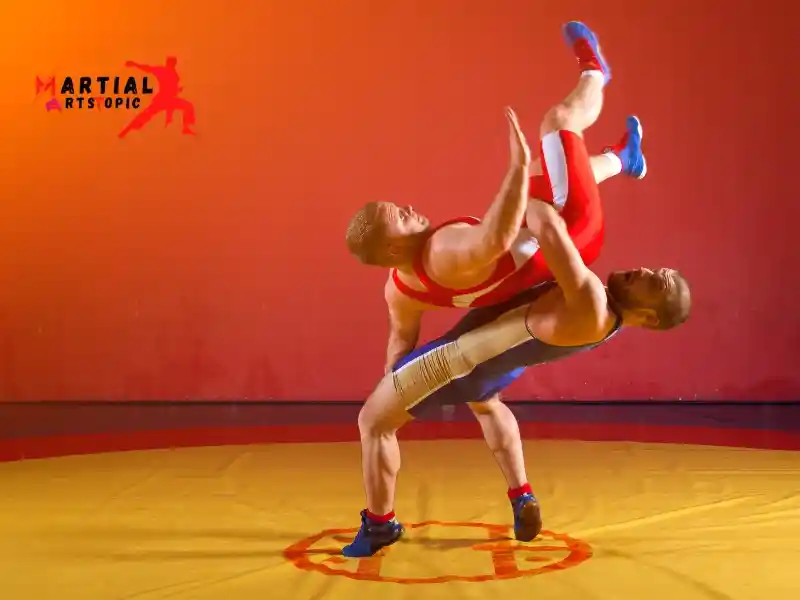
When it comes to the world of combat sports, there are countless disciplines to explore, each with its own unique benefits and techniques. Two popular and formidable forms of martial arts that often find themselves compared are Sambo and Wrestling. Both disciplines have their own strengths and advantages, making it an intriguing topic to delve into.Sambo, a Russian martial art and combat sport, is known for its versatility and practicality. It combines elements of judo and wrestling with its own unique techniques, making it a well-rounded and effective form of self-defense. On the other hand, Wrestling has a rich history and is widely practiced around the world, with its focus on grappling and takedowns.
Let’s inspect the benefits of each discipline and how they stack up against each other:
Sambo Benefits
- Versatility: Sambo incorporates a wide range of techniques including throws, joint locks, and ground fighting, making it a versatile martial art that prepares practitioners for various combat scenarios.
- Self-Defense: The practical nature of Sambo makes it an effective form of self-defense, equipping individuals with the skills to protect themselves in real-life situations.
- Physical Fitness: Training in Sambo helps improve strength, agility, and overall physical fitness, making it a great option for those looking to stay in shape.
Wrestling Benefits
- Grappling Proficiency: Wrestlers develop exceptional grappling skills and takedown techniques, which can be invaluable in both sports and self-defense situations.
- Mental Toughness: Wrestling requires a high level of mental toughness and discipline, promoting resilience and the ability to overcome challenges.
- Competitive Edge: Wrestling is a widely practiced competitive sport, offering opportunities for athletes to compete at various levels and showcase their skills.
Sambo vs Wrestling: Which Is Right for You?
Are you torn between choosing Sambo or Wrestling as your martial arts discipline? Both sports have their own set of unique techniques and benefits. Let’s dive into the comparison and help you make an informed decision.Sambo, a Russian martial art, combines elements of judo and freestyle wrestling. It focuses on throws, ground fighting, and submissions. On the other hand, wrestling is a combat sport involving takedowns and pins, with a strong emphasis on controlling and dominating your opponent on the mat.
When it comes to choosing between Sambo and Wrestling, the decision ultimately depends on your personal preferences and goals. If you’re interested in a more diverse set of techniques that include striking, joint locks, and chokes, Sambo might be the right choice for you. However, if you prefer focusing solely on takedowns, pins, and controlling your opponent, wrestling could be the perfect fit.
Both Sambo and Wrestling offer incredible physical and mental benefits. They improve strength, flexibility, agility, and mental toughness. Additionally, they instill discipline, respect, and perseverance.
Sambo vs Wrestling: Choosing the Right Discipline for You

When comparing Sambo vs Wrestling, it’s essential to consider your personal goals, preferences, and interests. Both disciplines offer a wide range of physical, mental, and practical benefits, making them valuable pursuits for individuals of all ages and skill levels.
If you are drawn to the versatility of striking, grappling, and self-defense applications, Sambo may be the perfect choice for you. On the other hand, if you are passionate about takedowns, ground control, and mental resilience, wrestling could be the ideal discipline to pursue.
Ultimately, the decision between Sambo and wrestling should align with your individual aspirations and objectives. Whether you are seeking to compete in combat sports, improve your overall fitness, or learn practical self-defense skills, both Sambo and wrestling have much to offer.
Conclusion
Sambo vs Wrestling are impressive martial arts with their own unique techniques, strategies, and styles. While Sambo emphasizes a combination of throws, joint locks, and ground fighting, Wrestling focuses on takedowns, control, and pinning techniques. Both disciplines require dedication, discipline, and perseverance to master. Whether you’re drawn to the versatility of Sambo or the raw power of Wrestling, both offer valuable skills for self-defense, competition, or overall physical fitness. Ultimately, the choice between the two depends on individual preferences, goals, and interests. Embrace the journey of learning and practicing either discipline, and enjoy the benefits they bring to your life.
